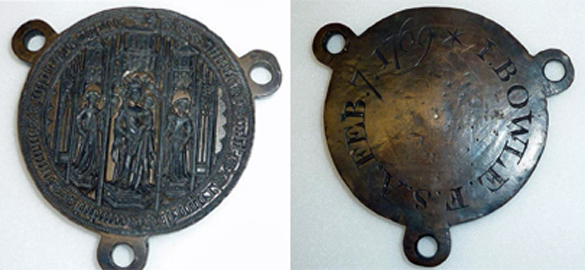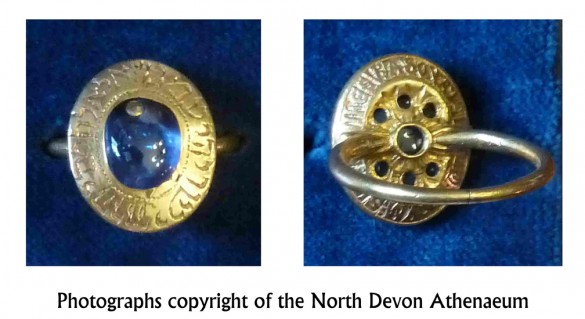Despite its modest size, Pilton Priory possessed quite a large and ornate seal. It was all the more unusual for bearing images on both sides, each half being formed in its own metal matrix with three little ‘ears’ that allowed the two halves to be correctly aligned.

The Two Sides of the Pilton Priory Seal
Over 200 years after the suppression of Pilton Priory, both matrices came into the hands of John Bowle (1725-1788), a Wiltshire vicar and Fellow of the Society of Antiquaries with a passion for Cervantes’ Don Quixote. Whether the Reverend Bowle (Don Bowle to his friends) was an extra proprietorial type or merely afraid of losing his acquisition, he had not one but both reverse sides of the matrices engraved with his name! Fortunately, future owners of the artefacts did not follow suit.
In the late 1870s, Pilton Priory’s seal matrices were acquired by the Victoria and Albert Museum in London. Dr. Kirstin Kennedy, Curator in the Metalwork Section, re-examined these lovely Pilton artefacts and has also taken the time and trouble to bring together the information available and to produce a document about them. You can access this by clicking on this link: http://collections.vam.ac.uk/item/O322757/seal-matrix/.

